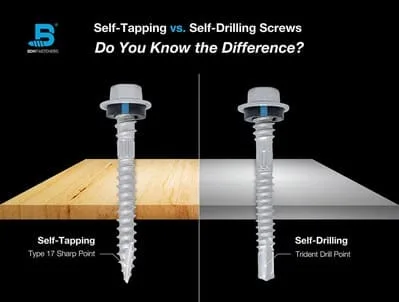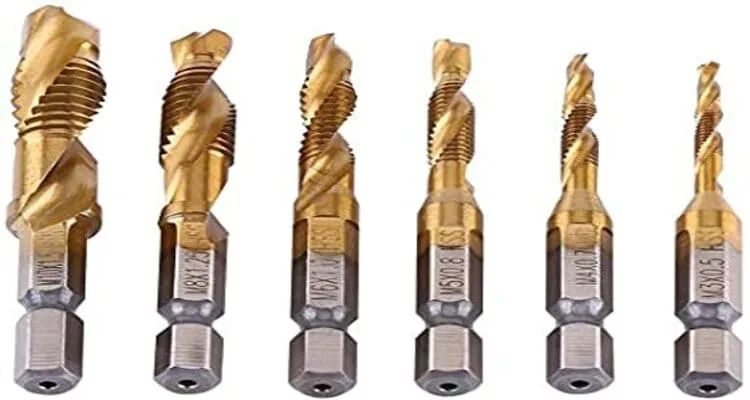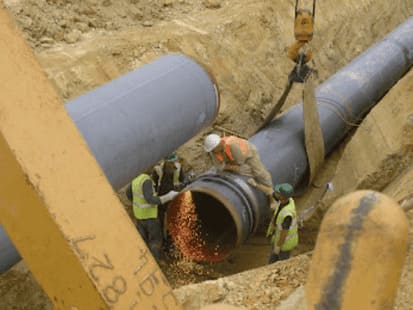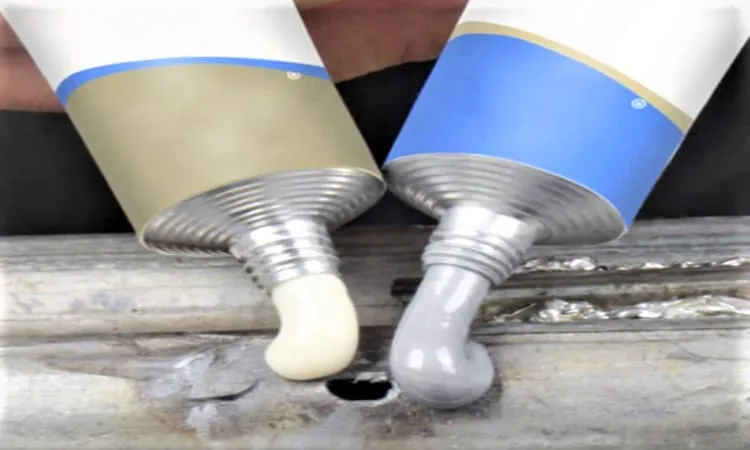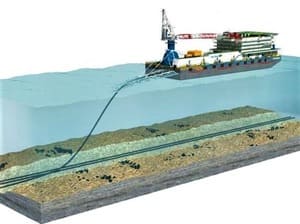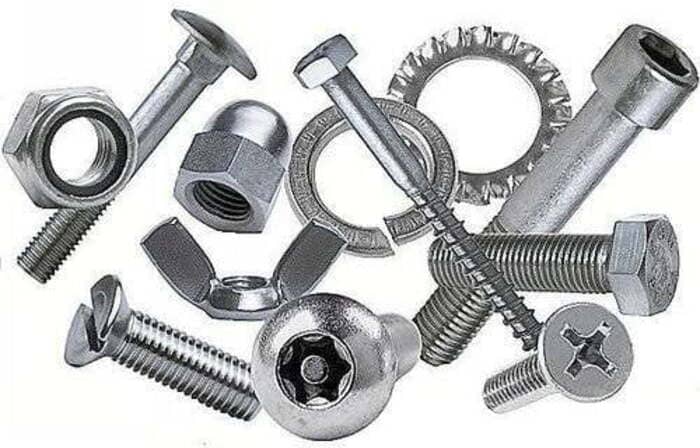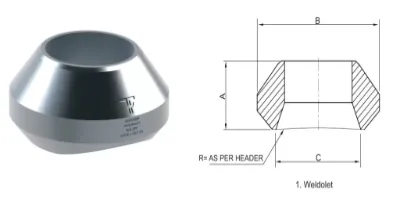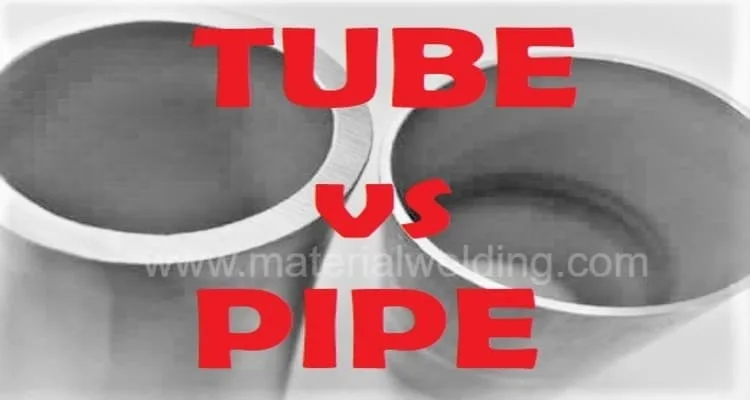What is Hot Tapping?
A hot tap, also known as a pressure tap or wet tap, is a method of connecting a new pipeline or branch to an existing pressurized pipeline without shutting down or depressurizing the system. The hot tapping process involves drilling a hole into the existing pipeline while it is still in operation and then installing a valve or other fitting to create a new connection.
Hot Tapping Process
Hot tapping, also known as pressure tapping, is a technique used to tap into a pipeline or vessel while it is still in operation, without interrupting the flow of the product. The process involves creating a hole in the pipeline or vessel using a drilling machine or hot tap machine, and then installing a valve or other equipment to allow for the safe and controlled diversion of the product. Hot tapping is commonly used in the oil and gas industry for pipeline repair, maintenance, and modification, as it allows for work to be carried out on live systems without shutting them down, which can result in costly downtime.
Double block and bleed (DBB) isolation is a method of isolating a section of pipeline or vessel for maintenance or repair, by creating two barriers or blocks, with a bleed valve between them. The two blocks are created using two isolation valves, which are closed to create a seal on either side of the section that needs to be worked on. The bleed valve is then opened to release any trapped fluid or pressure between the two blocks, ensuring that the section is completely isolated and safe for work to be carried out.
What is the Purpose of Hot Tapping?
Hot tapping and double block and bleed isolation are used in the oil and gas industry for several reasons. One of the primary reasons is to reduce downtime during maintenance, repair, or modification of pipelines or vessels. Shutting down a pipeline or vessel can be a time-consuming process and can result in significant lost revenue for oil and gas companies. Hot tapping and double block and bleed isolation allow work to be carried out on live systems without the need for shutdowns, minimizing downtime and maximizing productivity.
Another important reason for using these processes is safety. The oil and gas industry involves working with hazardous materials, and shutting down a pipeline or vessel can create a potentially dangerous situation. Hot tapping and double block and bleed isolation provide a safe working environment by minimizing the risk of accidents or leaks.
Finally, hot tapping and double block and bleed isolation provide a high degree of flexibility for oil and gas companies. These processes allow modifications to be made to existing pipelines or vessels without the need for major disruption or downtime. This can be particularly beneficial in situations where pipeline or vessel modifications are required due to changes in production, demand, or regulation.
Overall, the use of hot tapping and double block and bleed isolation in the oil and gas industry provides a safe, cost-effective, and flexible way to maintain and modify pipelines and vessels, while minimizing downtime and maximizing productivity.
Benefits of Hot Tapping
The benefits of hot tapping are numerous. By allowing for modifications and maintenance to be performed on live pipelines, downtime is minimized, reducing production losses and increasing efficiency. Additionally, hot tapping eliminates the need for costly and time-consuming shutdowns, which can be disruptive to surrounding communities and the environment.
The benefits of hot tapping and double block and bleed isolation in oil and gas pipeline repair and maintenance are:
- Reduced downtime: Hot tapping allows for work to be carried out on live systems, minimizing the need for shutdowns and reducing downtime.
- Increased safety: Double block and bleed isolation creates a safe working environment, as it prevents the release of hazardous substances and ensures that the section being worked on is fully isolated.
- Cost savings: By minimizing downtime and reducing the need for shutdowns, hot tapping and double block and bleed isolation can lead to significant cost savings for oil and gas companies.
- Flexibility: Hot tapping and double block and bleed isolation provide a high degree of flexibility, allowing for modifications to be made to existing pipelines or vessels without the need for major disruption.
Overall, hot tapping and double block and bleed isolation are valuable techniques for oil and gas pipeline repair and maintenance, providing a safe and cost-effective way to carry out work on live systems.
Types of Hot Tapping Fittings
There are various types of hot tapping fittings that can be used to create a new connection in an existing pipeline. Some of the most common types of hot tapping fittings include:
- Split Tee
- Flangeless fitting for welding valve
- Split lateral Tee
- Mechanical Tee for avoiding weld
- Saddle with reinforced pad for low pressure
- Threaded Olet for venting
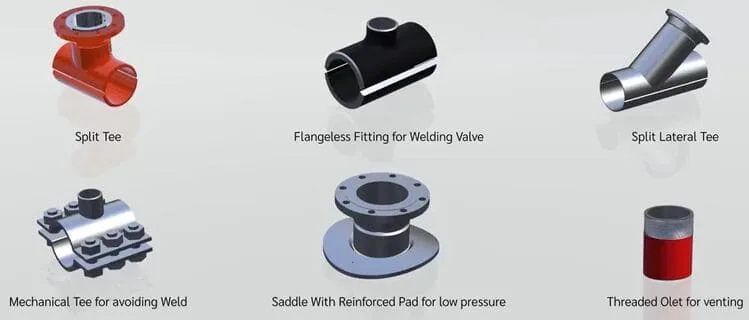
Hot Tapping Procedure
The first step in the hot tapping process is to identify the location on the existing pipeline where the new connection is needed. The hot tapping equipment is then set up and the drilling machine is positioned on the pipeline at the chosen location. The drilling machine is equipped with a cutter that is designed to penetrate the pipe while it is still under pressure.
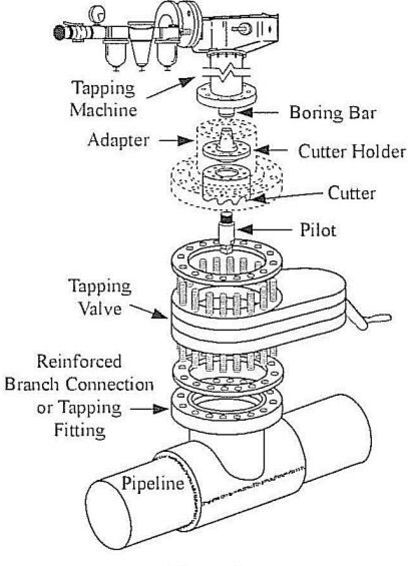
Once the cutter has penetrated the pipe, a pilot drill is used to create a hole in the pipe. The pilot drill is followed by a larger cutter that is used to cut out a section of the pipe. The removed section is then captured and removed from the pipe.
With the section of pipe removed, a valve or other fitting is installed to create the new connection. The valve or fitting is designed to be able to withstand the pressure and temperature of the system.
After the valve or fitting is installed, it is tested to ensure that it is properly sealed and capable of withstanding the pressure of the system. Once the new connection has been tested and verified, the hot tapping equipment is removed and the system can continue to operate as normal with the new connection in place.
Hot tapping is a common method used in the oil and gas industry and other industries where pipeline systems are used. It is a cost-effective and efficient way to create new connections without the need for system shutdowns or depressurization.
how a Hot Tap works?
The hot tapping process involves several steps:
- Preparation: The first step is to prepare for the hot tap. This includes selecting the location for the tap, preparing the hot tapping equipment, and ensuring that all safety precautions are in place.
- Drilling: The next step is to drill a hole into the existing pipeline. This is done while the pipeline is still in operation and under pressure. The hot tapping equipment is used to drill the hole, and a pilot drill is used to create a small hole in the pipeline. The pilot drill is followed by a larger cutter that is used to cut out a section of the pipe.
- Removal: Once the section of pipe has been cut out, it is removed from the pipeline. The removed section is captured and removed from the pipe to prevent it from causing damage or blockage further down the line.
- Installation: With the section of pipe removed, a valve or other fitting is installed to create the new connection. The valve or fitting is designed to be able to withstand the pressure and temperature of the system. Usually, new valve or fitting are connected by welding application.
- Testing: After the valve or fitting is installed, it is tested to ensure that it is properly sealed and capable of withstanding the pressure of the system. This involves pressure testing the valve or fitting to ensure that it can handle the flow of fluid through the new connection.
- Completion: Once the new connection has been tested and verified, the hot tapping equipment is removed and the system can continue to operate as normal with the new connection in place.
